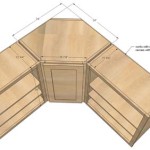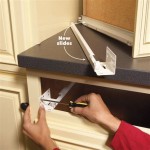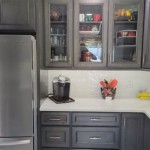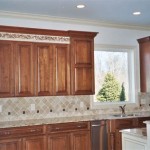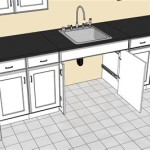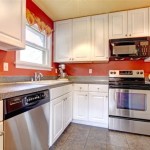Your article should focus on the advantages, disadvantages, design considerations, and the impact on kitchen ergonomics and aesthetics when opting for raised kitchen cabinets. ```html
Raised Kitchen Cabinets: Elevating Design and Functionality
Raised kitchen cabinets, a design choice that extends the height of upper cabinets beyond the standard, are gaining popularity in modern kitchen renovations. This architectural modification provides both aesthetic and practical benefits, influencing storage capacity, visual appeal, and overall kitchen ergonomics. Understanding the nuances of raised cabinets is crucial for homeowners and designers aiming to optimize their kitchen space.
Standard kitchen cabinet installations typically position the upper cabinets with a gap of around 18 inches between the countertop and the bottom of the cabinet. Raised cabinets effectively reduce or eliminate this gap, reaching closer to the ceiling or even touching it. This design shift offers distinct advantages but also presents certain challenges that must be carefully considered during the planning phase.
The decision to incorporate raised kitchen cabinets hinges on a variety of factors, including the ceiling height, the desired aesthetic, and the intended function of the space. A thorough evaluation of these elements will ensure that the raised cabinet design complements the overall kitchen design and addresses specific needs effectively.
Maximizing Storage Space
One of the primary advantages of raised kitchen cabinets is the increased storage capacity. By extending the cabinets upwards, previously unused vertical space is transformed into valuable storage areas. This is particularly beneficial in smaller kitchens, where maximizing every available inch is paramount.
The additional storage space provided by raised cabinets can be used to store infrequently used items, seasonal decorations, or bulk food purchases. This declutters the lower cabinets and countertops, creating a more organized and visually appealing kitchen environment. Furthermore, the extended height allows for the installation of additional shelves within the cabinets, further enhancing their storage potential.
However, it is important to consider the accessibility of the upper shelves in raised cabinets. Items stored in these higher locations may require the use of a step stool or ladder to reach, which can be inconvenient for daily use. Therefore, careful planning is necessary to ensure that frequently used items are stored in more accessible locations.
Enhancing Kitchen Aesthetics
Beyond their functional benefits, raised kitchen cabinets contribute significantly to the overall aesthetic appeal of the kitchen. The extended height creates a sense of grandeur and sophistication, making the kitchen feel more spacious and luxurious.
Raised cabinets can visually elongate the kitchen, drawing the eye upwards and creating a more balanced and harmonious design. This is particularly effective in kitchens with lower ceilings, where the raised cabinets can help to counteract the feeling of confinement. Furthermore, the seamless integration of cabinets with the ceiling creates a cleaner and more streamlined look, minimizing visual clutter.
The design of the raised cabinets can be further enhanced through the use of decorative moldings and trim. These architectural details add character and visual interest, elevating the overall design of the kitchen. Crown molding, in particular, is a popular choice for raised cabinets, providing a refined and elegant finish.
However, it's crucial to ensure that the raised cabinets are proportioned correctly to the ceiling height and the overall dimensions of the kitchen. Overly tall cabinets can overwhelm the space and create a top-heavy appearance. Careful consideration of the cabinet dimensions and the use of appropriate moldings and trim is essential to achieve a balanced and aesthetically pleasing design.
Ergonomic Considerations and Accessibility
While raised cabinets offer increased storage and aesthetic enhancements, it's important to consider the ergonomic implications of this design choice. The higher placement of shelves and storage areas can impact accessibility, particularly for individuals with mobility limitations or shorter stature.
Reaching items stored in the upper shelves of raised cabinets may require the use of a step stool or ladder, which can be inconvenient and potentially unsafe, especially for elderly or disabled individuals. Therefore, careful planning is necessary to ensure that frequently used items are stored in more accessible locations, such as lower cabinets or drawers.
Furthermore, the increased height of the cabinets can affect the lighting in the kitchen. Tall cabinets can cast shadows on the countertop, reducing visibility and making it difficult to perform tasks. This can be mitigated by installing under-cabinet lighting, which provides direct illumination to the work surface. Proper lighting is essential for creating a safe and functional kitchen environment.
When designing raised kitchen cabinets, it's crucial to consider the needs and abilities of all users. Incorporating adjustable shelves and pull-down storage systems can improve accessibility and make the cabinets more user-friendly. These design features provide greater flexibility and allow individuals to customize the storage space to suit their specific needs.
Design and Installation Challenges
Installing raised kitchen cabinets presents unique challenges that must be addressed during the design and installation process. Accurate measurements are essential to ensure that the cabinets fit properly and align seamlessly with the ceiling.
Uneven ceilings can pose a significant challenge when installing raised cabinets. In older homes, ceilings may not be perfectly level, which can create gaps between the cabinets and the ceiling. This can be addressed by using shims or fillers to level the cabinets and create a flush finish. However, this requires careful attention to detail and skilled craftsmanship.
The installation of raised cabinets may also require modifications to existing electrical wiring or plumbing. If electrical outlets or plumbing pipes are located in the area where the cabinets will be installed, they may need to be relocated to accommodate the new cabinets. This can add to the cost and complexity of the project, and it's important to consult with qualified professionals to ensure that the work is done safely and correctly.
Proper ventilation is also a crucial consideration when installing raised cabinets. If the cabinets are located near the stove or oven, it's important to ensure that there is adequate ventilation to prevent the build-up of heat and moisture. This can be achieved by installing a range hood or other ventilation system that effectively removes smoke, steam, and grease from the air.
Material Selection and Style Considerations
The choice of materials and style for raised kitchen cabinets is crucial to achieving the desired aesthetic and ensuring the longevity of the cabinetry. A wide range of materials are available, each with its own unique characteristics and benefits.
Wood cabinets are a classic and timeless choice, offering warmth and natural beauty. Solid wood cabinets are durable and long-lasting, but they can be more expensive than other options. Wood veneer cabinets offer a similar look at a lower cost, but they are not as resistant to moisture and wear.
Laminate cabinets are a popular choice for modern kitchens, offering a sleek and contemporary look. Laminate is a durable and easy-to-clean material that is available in a wide range of colors and patterns. However, laminate cabinets are not as resistant to heat and scratches as other materials.
The style of the raised kitchen cabinets should complement the overall design of the kitchen. Shaker-style cabinets are a versatile choice that works well in both traditional and contemporary kitchens. Slab-door cabinets offer a minimalist and modern look, while raised-panel cabinets add a touch of elegance and sophistication.
The hardware used on the raised kitchen cabinets can also have a significant impact on the overall look and feel of the kitchen. Knobs and pulls are available in a wide range of styles and finishes, allowing homeowners to customize the cabinets to their specific taste. Choosing hardware that complements the style of the cabinets and the overall design of the kitchen is essential for creating a cohesive and visually appealing space.
```
Shaker Cabinets Vs Raised Panel Choice Cabinet

Raised Panel Kitchen Cabinets Rta Cabinet Depot

Raised Panel Cabinets Kitchen Cabinetselect Com

Raised Kitchen Cabinet Makeover Sawdust 2 Stitches

Antique White Raised Panel Kitchen Cabinets

Raised Panel Kitchen Cabinets Rta Cabinet Depot

Genius Diy Raising Kitchen Cabinets And Adding An Open Shelf The Crazy Craft Lady

How To Achieve A Traditional Kitchen Look With Raised Panels

What Is A Raised Panel Cabinet Door

Bright White Raised Panel Cabinet Apex Kitchen Cabinets
Related Posts


